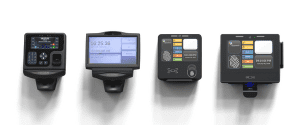As a security-conscious individual, you lock your car, your front door, and your windows when you go out, and if you’re the last one to leave work, you set the alarm and ensure all security is working. These are all a given. But we don’t always take the same approach when it comes to protecting the intangible assets of our data and personal information.
Data breaches and information theft are rampant. Protecting what we can’t always see should be given the same level of attention as protecting our valuable personal belongings and workplace assets. Data is just as valuable – and oftentimes more so – as physical “stuff.”
Data Privacy Day
January 28 is Data Privacy Day. First established in 2007 and is now recognized in over 50 countries. It’s an annual reminder of awareness and education about the value of data for individuals, businesses, and people who work in government and the non-profit sector.
Data breach damage
A data breach can be catastrophic. The consequences can be both short-term and long-term, including:
- Downtime, cessation of trading, or interruption of operations
- Damage to public perception, share price, and brand reputation
- Loss of consumer, trading partner, and supplier confidence
- Potential legal action, including fines and compensation
- Risk of ransom for retrieving the data
Individuals and organizations fall victim to data breaches on a regular basis, even those who are security savvy, because cybercrime is intelligent, always evolving with new technology and designed to fool almost anyone.
Where Are The Risks?
Passwords & Personal Information
The name of your first pet, the town where you were born, the street where you grew up, your star sign, your favorite place…? We’ve all seen examples of this type of personal information being used in ‘quizzes’ to reveal something fun to share on social media. What you don’t see is the data harvesting they contain or the extensions they add to your browser. In 2018, one quiz app exposed 120 million people’s private information – and that’s just the tip of the iceberg.
Phishing is common. Scammers often use a scattergun approach to gather potentially useful information. Incoming emails with attachments and links can be a risk (I had one myself as I was writing this – asking me to open an attachment related to something I’d supposedly ordered). If you don’t know the sender, delete the email. If you do, but it’s an unexpected email, don’t just look at the name of the sender; check the email address used too – often, you’ll find it’s not a legitimate address for the supposed sender.
And if it is legitimate, they’ll find another way to reach you.
Wi-Fi
When you’re out and about, you may see a message on your phone about free public Wi-Fi in the area. If you’re working, sharing personal information, or about to use a credit card, don’t use it. Free public Wi-Fi is notorious for being vulnerable to hacking. Questionable attachments or links in phone messages are becoming more frequent. Don’t open them unless you’re sure of the sender.
Protective layers and barriers
When protecting your home, adding layers of security (a dog, fence, video doorbells, shutters, window locks, alarm, etc.) can help. Layers of protection can be put in place around your data, too – and although they may not guarantee 100% security against cyberattacks, they can significantly reduce the risk of a successful breach.
How to Protect Your Data
There are things you can do to protect your data:
- Choose strong passwords: Use a combination of upper and lowercase letters, numbers, and symbols.
- Use a password manager to reduce the need to have all of your passwords the same.
- Use multi-factor authentication: This requires you to verify your identity with more than one factor, such as a password and a code sent to your email or phone.
- Be cautious about what information you share: Don’t share personal information on social media or other online platforms.
- Be careful about what links you click on: Only click on links from trusted sources.
- Keep your software up to date.
- Be vigilant: Be aware of the latest threats and scams.
- Back up your data regularly.
Protecting Your Data: It’s Not Just About You
Protecting your data is not just about protecting yourself. It’s also about protecting your organization and your customers. A data breach can damage your reputation and cost you money. By taking steps to protect your data, you can help to mitigate these risks.
Leaving your business potentially exposed is too great a risk to take. Support is available from a variety of sources – government, professional bodies and specialists. GT Clocks has been protecting business data since 1989 and, in 2021, was awarded ISO 27001 certification, further demonstrating our dedication to robust data security practices.
The Significance of Data Security
Security of PII data has become a critical element for global organizations. The introduction of biometric security legislation and laws globally has shown the need to ensure that the capture, processing and storage of data must be a core part of any strategic security plans. Class action lawsuits that have been taken against companies that have failed to maintain compliance clearly demonstrate just how employees are becoming increasingly aware of the rights and obligations of their employers.
The security of our devices and the GTConnect platform is essential for businesses to comply with current and future legislation. Our devices’ tight integration with the GTConnect platform guarantees that extremely high levels of data security and encryption are applied at each step in the workforce data management process.
Find out more about our human capital management solutions here and how we can work with you to ensure that you stay safe and compliant at all stages of data capture.






